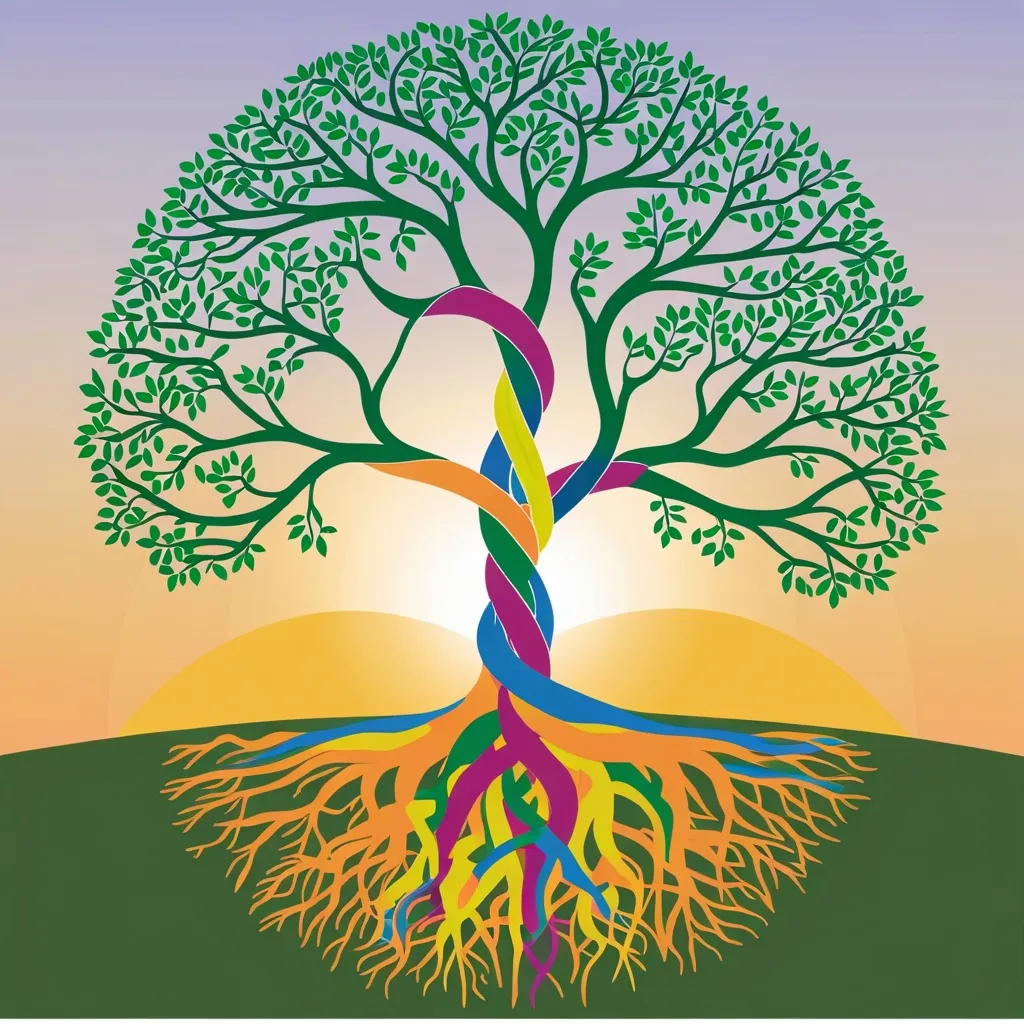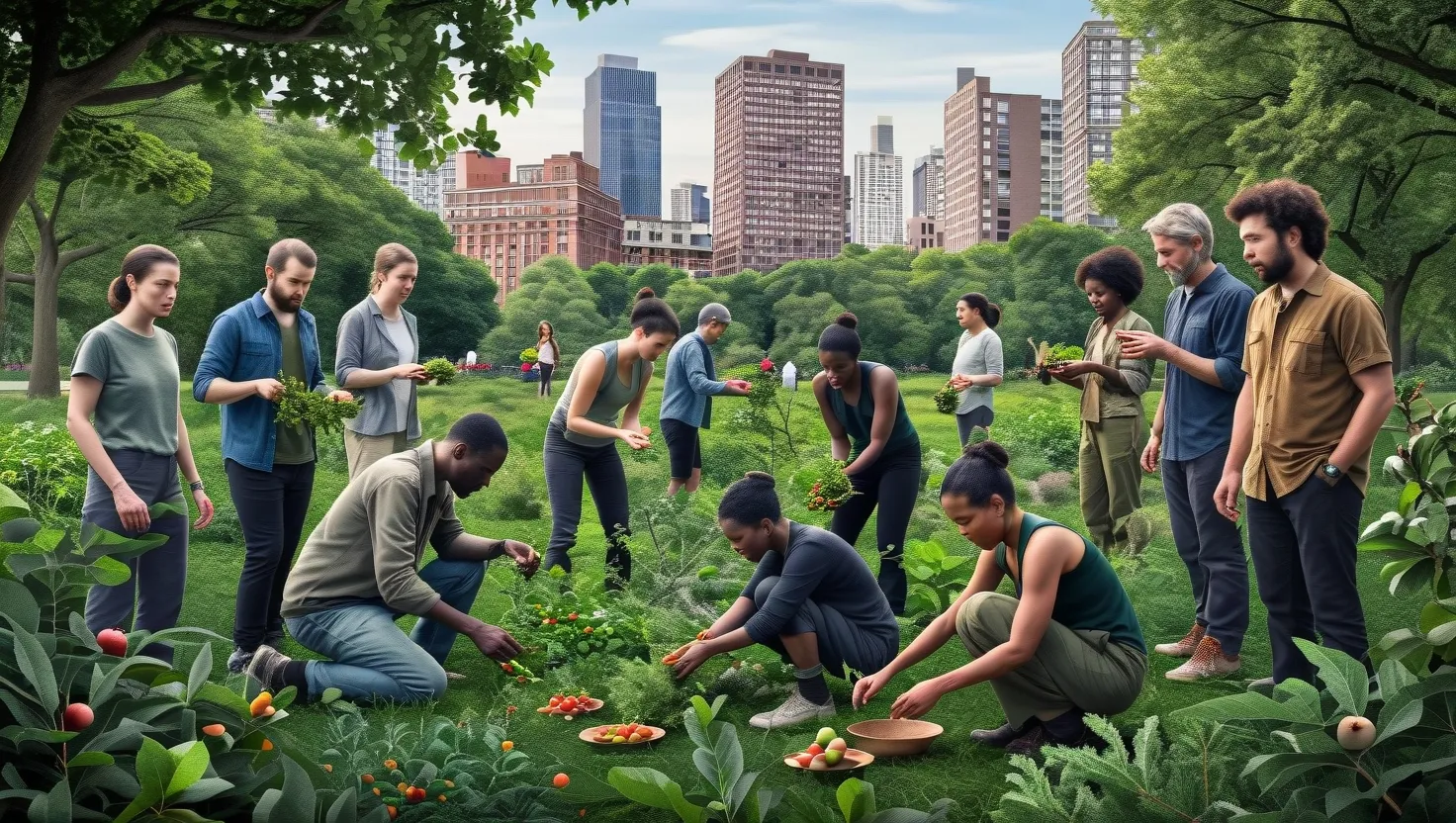Native American wisdom offers a profound perspective on living in harmony with the natural world. Their ancient practices and beliefs provide valuable insights for addressing modern environmental challenges. By examining these principles, we can discover practical ways to reduce our ecological footprint and foster a more sustainable relationship with the Earth.
Resource mindfulness stands at the forefront of Native American environmental philosophy. This concept encourages us to consider the full impact of our consumption choices and use only what we truly need. In practice, this might mean opting for a reusable water bottle instead of disposable plastic ones, or carefully planning meals to minimize food waste. It’s about cultivating a mindset of conscious consumption, where every resource is valued and used with purpose.
“The Earth does not belong to us. We belong to the Earth.” - Chief Seattle
This quote encapsulates the Native American view of our relationship with the planet. How might our daily choices change if we truly embraced this perspective?
Learning local ecology is another crucial aspect of Native American environmental living. Traditional communities possessed an intimate knowledge of their surroundings, understanding the intricate relationships between plants, animals, and natural cycles. For modern individuals, this principle can be applied by studying the flora and fauna native to our areas, observing seasonal changes, and becoming attuned to local weather patterns. This knowledge not only deepens our connection to the environment but also enables us to make more informed decisions about resource use and conservation.
Creating circular systems is a practice deeply ingrained in Native American traditions. In these communities, every part of a harvested resource found a purpose, minimizing waste. We can incorporate this principle into our lives by implementing composting systems, repurposing items instead of discarding them, and choosing products with minimal packaging. This approach not only reduces waste but also fosters creativity and resourcefulness.
Following seasonal rhythms aligns our lives more closely with natural cycles. Native Americans adapted their activities to the changing seasons, and we can do the same. This might involve eating seasonally available foods, adjusting our energy use to daylight hours, or adapting our routines to weather patterns. By synchronizing our lives with nature’s rhythms, we can reduce our environmental impact and potentially improve our well-being.
“When we show our respect for other living things, they respond with respect for us.” - Arapaho proverb
How can we demonstrate respect for other living things in our daily lives? What changes might we see if we adopted this mindset?
Building community sharing networks is another principle we can learn from Native cultures. These societies emphasized resource sharing as a way to strengthen community bonds and ensure collective well-being. In modern contexts, this could translate to participating in community gardens, tool libraries, or local exchange systems. Such practices not only reduce individual consumption but also foster a sense of community and mutual support.
Practice gratitude rituals is perhaps one of the most transformative principles we can adopt from Native American environmental living. Before using resources, taking a moment to acknowledge their source can profoundly shift our relationship with the natural world. This mindful approach promotes responsible consumption and deepens our respect for the environment.
“Treat the earth well: it was not given to you by your parents, it was loaned to you by your children.” - Native American Proverb
How might our actions change if we truly viewed the Earth as a loan from future generations?
These principles offer practical ways to reduce our environmental impact while maintaining modern comforts. However, their true power lies in the shift in perspective they encourage. By viewing ourselves as part of nature rather than separate from it, we can cultivate a more sustainable and harmonious way of living.
Native American environmental principles also emphasize the importance of observing and learning from nature. Traditional knowledge often came from careful observation of natural phenomena over generations. In our modern context, this could mean taking time to observe local wildlife, understanding the patterns of plant growth in our area, or studying how local ecosystems respond to changes in weather or human activity.
“Listen to the wind, it talks. Listen to the silence, it speaks. Listen to your heart, it knows.” - Native American Proverb
What might we learn if we took more time to listen to nature? How could this inform our environmental practices?
Another key aspect of Native American environmental living is the concept of reciprocity with nature. This involves not just taking from the environment, but also giving back and nurturing it. In practice, this could mean planting native species in our gardens, participating in local conservation efforts, or simply ensuring we leave natural areas better than we found them.
The principle of interconnectedness is central to Native American environmental philosophy. This worldview recognizes that all elements of nature, including humans, are intrinsically linked and dependent on each other. Embracing this principle in our daily lives might involve considering the wider impacts of our actions, from the products we buy to the way we dispose of waste.
“We are part of the earth and it is part of us. The perfumed flowers are our sisters; the deer, the horse, the great eagle, these are our brothers.” - Chief Seattle
How might our relationship with the environment change if we truly saw other living beings as our relatives?
Native American traditions also emphasize the importance of passing environmental knowledge to future generations. This ensures the continuity of sustainable practices and fosters a long-term perspective on environmental stewardship. In our modern context, this could involve teaching children about local ecology, involving them in sustainable practices, or supporting environmental education programs in schools.
The concept of sacred spaces is another important aspect of Native American environmental living. Certain natural areas were considered sacred and treated with particular reverence and care. While we may not hold the same spiritual beliefs, we can still apply this principle by identifying and protecting areas of ecological importance in our communities.
“When all the trees have been cut down, when all the animals have been hunted, when all the waters are polluted, when all the air is unsafe to breathe, only then will you discover you cannot eat money.” - Cree Prophecy
How does this prophecy relate to our current environmental challenges? What changes in our society might it inspire?
Native American environmental principles also emphasize the importance of balance. This involves not just sustainable use of resources, but also maintaining balance within ecosystems and between human needs and the needs of other species. In practice, this might mean supporting sustainable fishing practices, advocating for wildlife corridors in urban development, or choosing products that don’t contribute to deforestation.
Lastly, Native American environmental living often involved a deep spiritual connection with nature. While this spiritual aspect may not resonate with everyone, we can still cultivate a sense of awe and respect for the natural world. This could involve spending time in nature, learning about the incredible adaptations of different species, or simply taking time to appreciate the beauty of our natural surroundings.
By integrating these Native American principles into our lives, we can foster a more sustainable and harmonious relationship with our environment. These practices not only benefit the planet but can also enrich our lives, connecting us more deeply with the natural world and with each other. As we face unprecedented environmental challenges, these ancient wisdoms offer valuable guidance for creating a more sustainable future.






